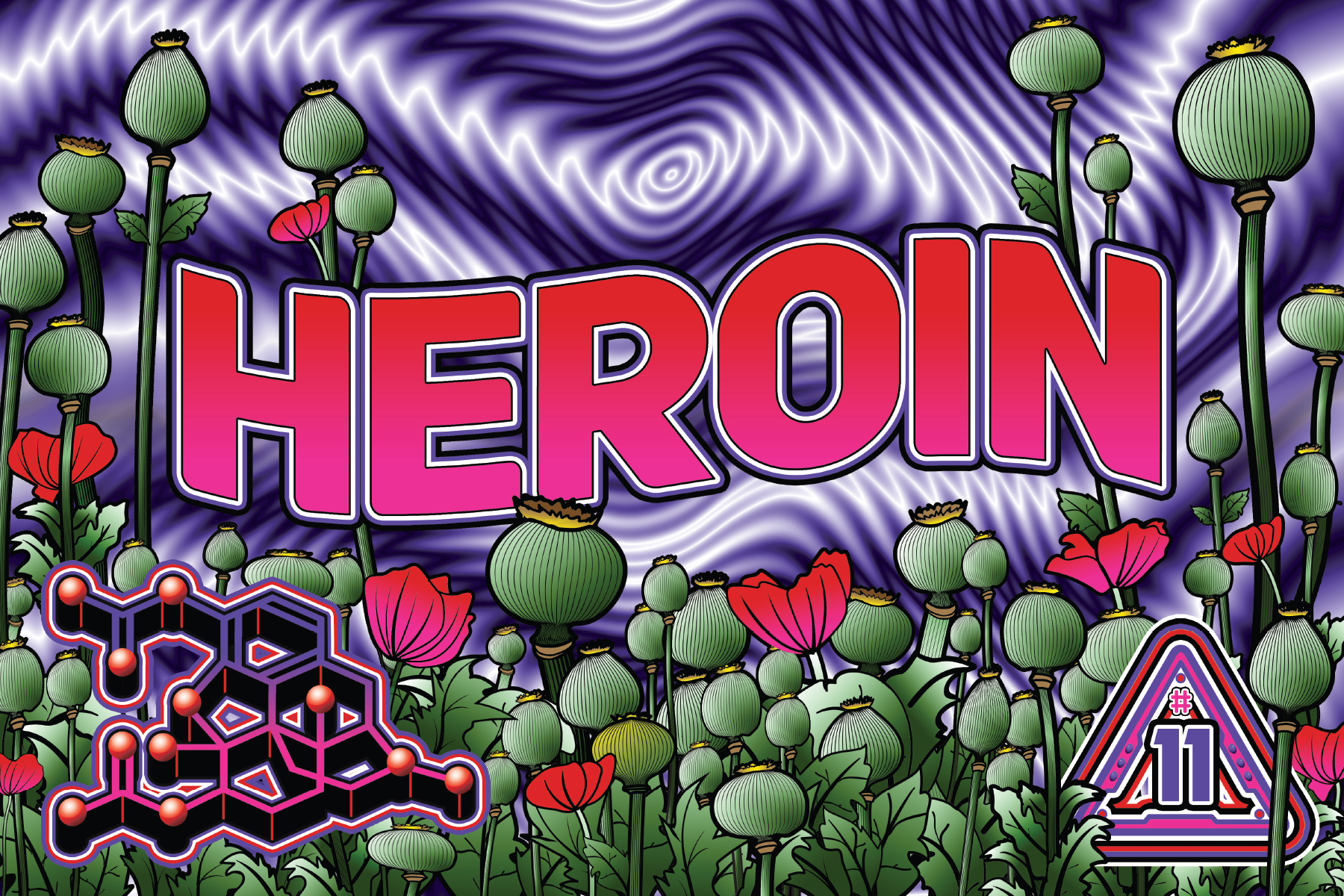
Heroin
Post Date: February 1, 2014
Rachel Clark2023-03-28T16:20:43-07:00
Heroin
What is heroin?
- Heroin, or diacetylmorphine, is made from the opium poppy. It belongs to a class of drugs known as opioids.
- Opioids bind to opioid receptors in the brain. The body produces its own opioids, like endorphins.
- Heroin can come in a white or brownish powder or as a dark brown and sometimes sticky substance (“tar”).
- Heroin is most often smoked or injected because these routes produce a stronger onset, but it can also be snorted or ingested orally.
What are the effects?
- Heroin has powerful pain-relieving properties.
- It’s typical for people to feel deeply content and relaxed, sometimes to the point of “nodding” in and out of consciousness. Not everyone experiences euphoria from heroin.
- The “nod” state is very similar to the dreamlike experience of being on the verge of sleep. Many people express surprise at how psychedelic nodding can be. Overdoses are often compared to falling into a deep sleep.
- Heroin is a depressant, which means that it slows down your breathing and heart rate and lowers your blood pressure.
- Side effects can include nausea, vomiting, drowsiness, slurred speech, constipation, and itchiness.
- When injected or smoked, the effects are felt within a few seconds; when snorted, within 5-15 minutes.
- The effects of heroin typically last 3-5 hours, with variation depending on how you ingest it.
What is a typical dose?
- An average dose of heroin can vary widely based on purity, tolerance, and route of administration.
- Real heroin has a dose range of about 5-8 mg when injected, 15-25 mg when smoked, and 20-35 mg when snorted. There is very little real heroin on the market at this time.
- Dosages should always be lowered when consuming dope (a slang term for street opioids) in a new environment or taking a new batch.
Be careful!
- Most heroin is now cut with, or completely replaced by, fentanyl. Even when it’s not, different batches of heroin can vary greatly in strength, making it one of the easiest drugs to overdose on.
- To prevent overdosing, many users will inject a small amount first (“tester shot”). This safety measure has become less effective because fentanyl and other potent synthetic opioids are rarely mixed evenly in any given bag of heroin. One part of a baggie may contain no fentanyl at all, while another part of the same baggie may contain a fatal dose.
- Mixing heroin with other depressants like alcohol or benzodiazepines (such as Xanax) greatly increases the risk of overdose and death.
- Opioid overdoses become fatal because a person’s breathing and heart rate slow so much that they stop altogether.
- Like any drug, it’s possible to use heroin compulsively and develop a problematic relationship with it. It may be a good idea to take a break if you find yourself regularly using heroin as a coping mechanism, or feeling very anxious at the thought of going without it for a period of time. It is strongly recommended to use heroin in moderation and avoid daily use.
- For many people, heroin produces a warm feeling that’s compared to being in love. This adds further risk of compulsive use for people who are experiencing emotional distress or other mental/physical health challenges.
- Using frequently can lead to very uncomfortable withdrawal symptoms that make it much more difficult to remember your initial boundaries around use. Withdrawal can also make it very difficult to stop using due to getting “sick.”
More harm reduction tips
- Naloxone (“Narcan”) is an overdose reversal drug that can be administered as a nasal spray or injected into a muscle, depending on the form. You can find it using the Naloxone Finder on the Harm Reduction Coalition’s website.
- If someone is breathing fewer than seven times per minute (or not at all), administer naloxone if you have it and call 911 for help. Start CPR if their heart stops. Lack of oxygen from slowed or stopped breathing can cause blue or gray tinting to someone’s lips, nose, fingers, and toes.
- You can read more about responding to overdose here.

